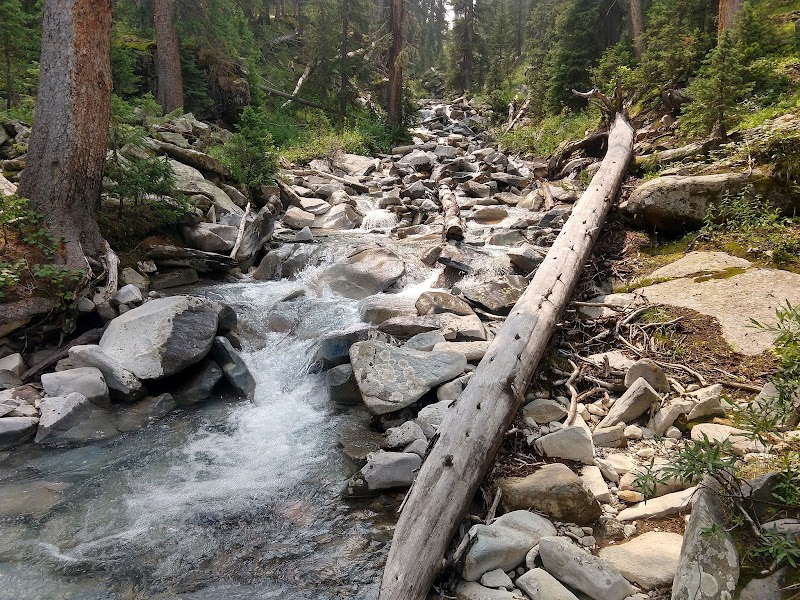
Rocky Mountains Adventures
The Rocky Mountains stretch over 3,000 miles from New Mexico to British Columbia and are a haven for outdoor enthusiasts. They offer a stunning array of activities, from hiking and skiing to wildlife viewing.
Popular Activities
Capture the Majesty: An Adventure Guide to Rocky Mountain Photography
The Rocky Mountains stand as colossal sentinels of nature, stretching across Montana, Wyoming, Colorado, New Mexico, Idaho, and Utah, each peak offering an exhilarating canvas for avid photographers. Here, amidst the rugged terrain and crystal-clear lakes, a photographer can capture not just images, but the very essence of the wild. As you prepare your equipment and set your sights on these breathtaking landscapes, let’s embark on a journey that merges thrilling adventure with practical photographic insights.
Begin your exploration in Montana, where the mountains speak of ancient tales. Glacier National Park is a photographer's dream, with its jagged peaks and vivid glacial lakes. Plan to rise before dawn; the light at sunrise casts a golden glow on the rugged outlines, illuminating the rich greens of the forests and the icy blues of the lakes. Ensure you carry a wide-angle lens to encapsulate the vastness of the landscapes. The Going-to-the-Sun Road offers spectacular viewpoints—perfect for capturing the drama of the terrain without straying far from your vehicle.
As you travel south into Wyoming, the grandeur of Grand Teton National Park invites you into a realm of sharp granite towers and shimmering lakes. The stillness of Jenny Lake at sunrise, with reflections that mirror the towering peaks, is an opportunity you won’t want to miss. Keep your camera settings ready to adjust quickly; the play of light changes rapidly in the mornings. Invest in a sturdy tripod to achieve that silky water effect and bring along filters to manage the bright Wyoming sun.
Crossing into Colorado, the Rocky Mountain National Park offers a diverse landscape of alpine meadows, towering peaks, and lush, green forests. Trail Ridge Road, which reaches over 12,000 feet, provides stunning panoramic views ideal for landscape photography. At high altitude, prepare for swift weather changes; layer up and carry a rain cover for your camera gear. Walking trails lead you deeper into nature’s embrace, where you can photograph vibrant wildflower fields and wildlife emerging from their winter slumber. Remember to keep a safe distance from animals, using zoom lenses to capture those fleeting moments.
New Mexico brings a different flavor to your photographic adventure. The Sangre de Cristo Mountains offer a rich blend of desert landscapes, mountain vistas, and cultural elements. The sunsets here are legendary; the sky ignites in deep reds and oranges, casting shadows that dance across the mountains. The Bandelier National Monument showcases ancient cliff dwellings that make for compelling composition subjects. As you snap away, consider a low angle to incorporate foreground elements, adding depth and perspective to your images.
Idaho’s Sawtooth National Recreation Area showcases rugged peaks and pristine lakes, ideal for wide-format photography. The dramatic difference between the dry, rocky terrain and the sparkling waters creates stunning contrasts. Seek out early morning or late evening for the best light, and take the time to hike along the trails to discover hidden gems away from the crowded spots. Pack adequate water and salty snacks to maintain your energy as you trek toward that perfect shot.
Finally, Utah’s Wasatch Range and Arches National Park round out your Rocky Mountain photography journey. The striking red rock formations against the backdrop of the snow-capped Rockies is a visual feast not to be missed. The park’s unique geological features offer fantastic opportunities for wide-angle and macro photography. The golden hour provides the soft light needed to accentuate textures in the rocks and illuminate the surrounding landscape.
As you embark on your photographic pilgrimage through the Rockies, remember that each snapshot you take is a story waiting to be told. Equip yourself not only with the right camera gear but also with a sense of adventure and respect for the natural world. Each region brings its unique challenges and rewards, but the thrill of capturing the wild beauty of the Rocky Mountains is a reward unto itself. Embrace the journey, and let each click of the shutter bring you closer to the heart of these majestic landscapes.
Plan Your Visit
Everything you need to know to prepare for an unforgettable trip to Rocky Mountains.
Entrance Requirements
Some areas require permits or entrance fees; check individual locations.
Best Time to Visit
Late spring to early fall for hiking; winter for skiing and snow sports.
Visitor Information
Rocky Mountain National Park Visitor Center, Yellowstone Visitor Center.
Getting There
Major highways connect parts of the Rockies; some roads are seasonal.
Weather & Climate
Summer temperatures range from 70-80°F during the day but drop at night. Winters are cold with heavy snow, making spring and fall ideal for cooler weather hikes.
Conservation Efforts
Threats include climate change impacting snowpack and glaciers, as well as potential wildfires. Efforts are underway to protect habitats and species like the Canada lynx.
Camping in Rocky Mountains
Find the perfect spot to stay overnight and immerse yourself in the details.
Moraine Park Campground
Located in Rocky Mountain National Park; famous for scenic views and wildlife.
Jenny Lake Campground
Offers stunning views of the Teton Range in Grand Teton National Park.
Top Trails
Continental Divide Trail
The trail spans from Mexico to Canada, offering varied terrains and ecosystems.
Sky Pond via Glacier Gorge Trail
Ends at an alpine lake, featuring waterfalls and stunning views.
Bear Lake Trail
A short, accessible loop with beautiful lake and mountain views.
Twin Sisters Trail
Offers panoramic views from the summit and challenges with elevation gain.
Trailblazer Tips
Altitude sickness can affect anyone, stay hydrated and acclimate.
Summer storms can appear suddenly; pack rain gear and check forecasts.
Book campsites well in advance, especially during peak season.
Sunrise hikes offer stunning views and fewer crowds.
